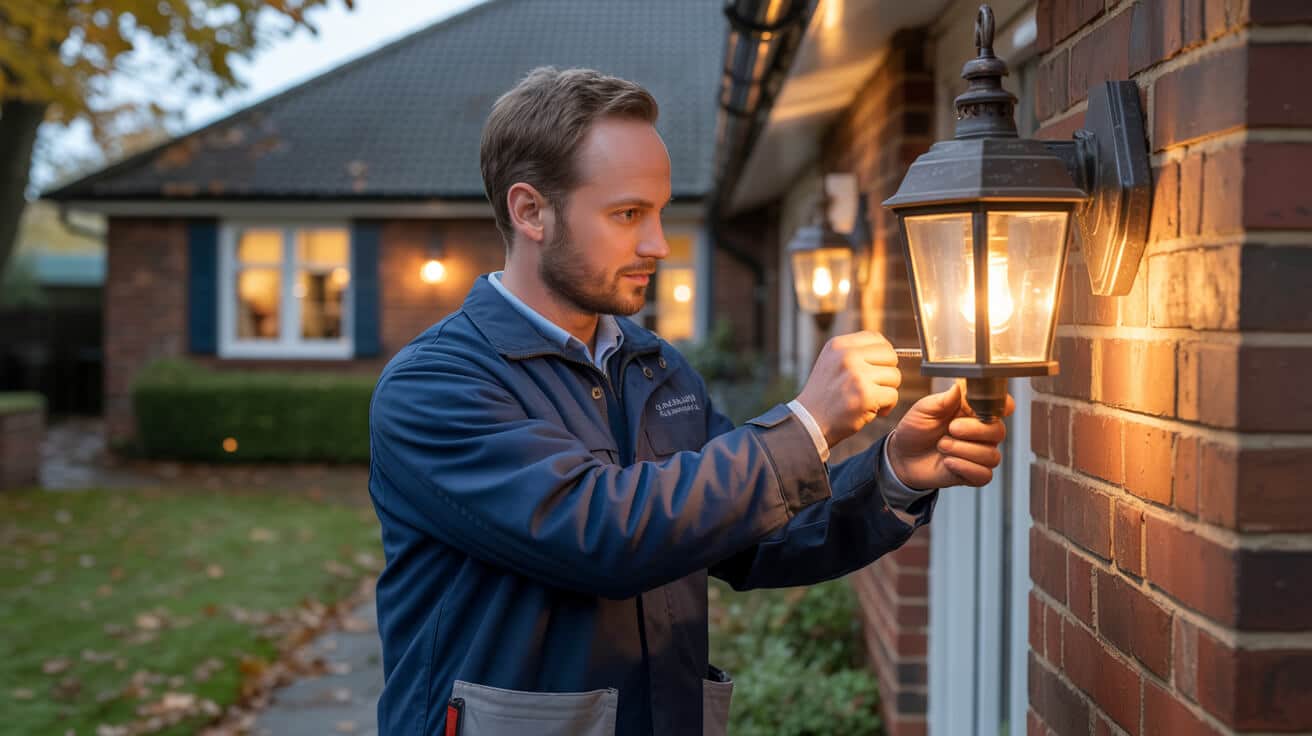 The Ultimate Annual Property Maintenance Calendar For Landlords
The Ultimate Annual Property Maintenance Calendar For Landlords

Why Do Landlords Need an Annual Property Maintenance Calendar—And What Goes Wrong Without One?
Stepping into the landlord role without a structured maintenance calendar isn’t flexibility—it’s a gamble with your time, profit, and hard-earned reputation. You might convince yourself that responding fast is enough, but the reality is unforgiving: the law expects evidence of proactive care, and emergencies penalise both your wallet and tenant trust. In today’s UK rental market, documentation and anticipation aren’t nice-to-haves—they’re survival gear.
Sleep comes easily when you know what’s cared for before it breaks.
Too often, the “fix it when it’s broken” approach leads to a string of small oversights—missed safety checks, overdue service intervals, unaddressed wear in gutters or roofs. These compound into expensive crises, council penalties, void periods, and even claims denied by insurance because a certificate lapsed unnoticed. Every year, headlines highlight landlords facing five-figure fines and reputational headaches for missing just one compliance date.
With regulatory burdens rising, a maintenance calendar is more than a checklist—it’s your shield against avoidable chaos. It transforms unpredictable stress into a series of manageable routines. Instead of stumbling into emergencies, you get ahead of them—enjoying stable income, lower costs, and tenants who see you as a pro, not a last-minute fixer.
A calendar won’t just save you from hassle—it quietly signals to every stakeholder that you take management seriously. Tenants, agents, and insurers take note. In time, so does your bottom line.
Which Annual and Compliance Tasks Are Essential for Every UK Landlord?

Missing a compliance deadline can unravel years of careful property management in a single letter from the council. The essentials aren’t optional—they form the backbone of landlord obligations:
What Are Non-Negotiable Compliance Checks?
- Gas Safety Certificate (CP12): Must be renewed every 12 months by a Gas Safe engineer. You need to provide the latest certificate to your tenants and keep copies for at least two years.
- Electrical Installation Condition Report (EICR): Legislated at least every five years, but regular visual checks (plugs, sockets, visible wiring) are crucial in between inspections.
- Smoke and Carbon Monoxide Alarms: Legally required in all UK rentals. Must be tested at the start of every tenancy and with each renewal. Non-compliance is penalised directly by local authorities *(rightmove.co.uk)*.
- Fire Safety Documentation: Annual checks on fire detection systems, emergency lights, escape routes, and fire doors—particularly for HMOs and larger buildings.
Fines for missing one compliance task can hit £30,000 or void your insurance policy overnight *(citywidehousing.co.uk)*.
Compliant landlords don’t rely on memory or paper diaries. They use digital reminders, maintain organised records, and review their calendars monthly. This not only keeps you above water with insurance and tenants—it protects against disputes, quickens void turnarounds, and smoothes any surprise inspection.
Ultimately, consistent compliance builds a track record that agents and lenders value, lowering your risk profile and keeping rental income predictable.
Does a Proper Maintenance Calendar Truly Save Money, Time, and Stress?

Building and using a maintenance calendar isn’t just bureaucracy—it’s probably the highest-ROI “admin” move you’ll make as a landlord. Here’s why pros swear by it:
How Does Routine Scheduling Pay Off for Landlords?
- Emergencies become rare: Scheduled upkeep catches issues—dripping taps, slow drains, frayed alarm cables—before they escalate. Planned works average 5–10x less cost than late-night emergencies *(alanboswell.com)*.
- Tenants become assets, not worries: Proactive maintenance breeds trust. Most tenants stay longer, complain less, and tell others about good landlords, reducing costs and filling voids.
- Annual repair costs go down: Grouping repairs by season means you save on callouts and can negotiate better rates with regular contractors.
- Compliance isn’t a scramble: Reminders built into the calendar nearly guarantee you never miss a critical certificate or inspection—avoiding frantic paperwork and potential fines.
Proactive maintenance can reduce your annual spend by up to 40% compared with a reactive approach *(alanboswell.com)*.
Wake up to fewer emergencies, less admin overwhelm, and a more profitable property. The calendar turns management into a steady habit—making your income more predictable and your downtime truly yours.
What Does a Complete, Season-by-Season UK Maintenance Routine Look Like?

The British climate blends rain, frost, heat, and growth—each season triggers a different set of landlord risks and opportunities. Smart landlords align their routines with these changes, not against them.
How Should Landlords Structure Their Year?
Winter: Insulate pipes, book boiler servicing, bleed radiators, and keep all drains clear. Pre-empt cold-weather surprises while heating demand’s at its peak.
Spring: Clear gutters and downpipes (winter leaves trouble behind), check roof tiles for damage, deep-clean any communal spaces, and freshen up exterior paintwork to stop small rot before summer.
Summer: Schedule landscaping—trimming, weeding, and treating fences or decks. This window is also ideal for repairing external woodwork, cleaning vents, or scheduling pest prevention work.
Autumn: Clear fallen leaves, check and reseal window and door edges, test all alarms and emergency lighting before the clocks change, and service the central heating before the cold settles in.
A single gutter clearance in autumn costs far less than remedying water ingress from a blocked downpipe.
Different properties, from period houses to city flats and HMOs, need tailored attention—think damp checks for older builds and more frequent alarm testing for shared living spaces.
Consistent seasonal care makes your asset more resilient. It isn’t overkill; it’s insurance that pays for itself every year.
How Do You Build and Use Effective, Legally Sound Maintenance Checklists?

A “good landlord” doesn’t rely on memory, loose notes, or generic online templates. Instead, you tailor and update your checklist to fit real-world needs and legal duties.
How Do Pros Build a Trusted Checklist?
- Start with a respected template: Your letting agent or landlord association usually provides a solid starting point.
- Customise for your stock: HMOs, listed buildings, new builds, and flats each need their flavour of compliance, so adapt accordingly.
- Set realistic frequencies: Not everything is annual; tasks like security checks or garden pruning might be quarterly or seasonal.
- Go digital when possible: Platforms and apps enable photos, date-stamped entries, and easy sharing with letting agents or auditors.
- Update regularly: Regulations shift—mark your calendar to review and tweak your list every six months, or after any new council guidance.
A checklist isn’t a formality; it’s your shield against memory lapses, disputes, and late-night stress.
If you use service partners or contractors, ask them to work from your list, and request digital status updates. Well-kept records are your best defence in any insurance or tenancy dispute.
What Digital Tools Help Landlords Prevent Missed Compliance and Cut Admin Burden?

relying on memory or email reminders for compliance and maintenance is risky—specialised property management software now makes this pain-free.
Which Property Management Tools Give Landlords the Most Edge?
- Automated compliance reminders: Never forget a gas check, EICR, or licence renewal—apps let you set it and forget it.
- Central document storage: Keep all certificates, photos, receipts, and inspection reports instantly accessible in one place.
- Workflow automation: Assign and track maintenance tasks, see real-time status from contractors, and pull up a full job history—no more digging through emails.
- Tenant self-reporting portals: Give tenants a dedicated spot to flag repairs or see what’s coming up, slashing call volume and confusion.
Digital-first tools like DoorLoop or UpKeep reduce admin load and make compliance frictionless for busy landlords *(utilityprofit.com)*.
Digital systems make audits, renewals, and insurance claims smoother—and you regain hours every month to focus on rent growth. With every deadline and certificate at your fingertips, anxiety becomes a thing of the past.
How Do You Build a Reliable Contractor Network That Protects Your Properties?

Landlords stand or fall by their contractor relationships. A dependable team isn’t a luxury—it’s your buffer against costly delays, frustrated tenants, and nurse-maiden projects that sap your time.
How Do Landlords Source and Keep Great Contractors?
- Ask for personal referrals: Letting agents, landlord groups, and peers will know who’s reliable—and who isn’t.
- Verify credentials: Gas engineers should be Gas Safe registered; electricians, NICEIC certified; all must be insured, and DBS-clearance builds further confidence.
- Prioritise multi-trade firms: Working with full-service providers makes scheduling routine jobs and emergencies smoother.
- Establish both a main contact and a backup: Especially for leaks, heating breakdowns, or other 24/7 disruptions.
Proactive network-building results in shorter voids and faster repair turnaround *(citywidehousing.co.uk)*.
Treat your best trades like partners—loyalty and communication lead to better rates, quicker response, and a more reliable property year-round.
How Do Professional Landlords Make Maintenance a Habit, Not a Hassle?

Consistency beats heroics every time. Landlords who thrive don’t chase emergencies; they set up routines and systems so maintenance happens like clockwork.
How Can Landlords Create Actionable Maintenance Habits?
- Batch jobs seasonally: Handle every pre-winter heating task in one go, putting rhythm ahead of random reminders.
- Automate reviews: Use digital calendars or property management tools to schedule annual audits—not just for compliance, but to build in time for catch-ups and reviews.
- Stick with all-in-one partners: Simplify your workload by using companies that handle repairs, checks, and documentation together.
- Make workflow visual: Use shared calendars, Kanban boards, or digital dashboards—clarity helps everyone stay on track.
Maintenance isn’t a crisis, it’s a culture—one that tenants value and inspectors respect.
Turning routines into habits lowers your stress, reduces costly surprises, and shows every tenant and agent you mean business.
Trust All Services 4U for Year-Round, Worry-Free Property Maintenance
Think about what your property could be with the right partner: every compliance date met, repairs fixed pre-emptively, and emergencies caught before they disrupt your cashflow or reputation. This is what All Services 4U delivers for landlords across the UK.
Lasting peace of mind comes from knowing real experts have your back all year.
All Services 4U blends multi-trade skill with total compliance coverage—gas, electrics, fire safety, and more. Our digital records keep you shielded in disputes or audits, and our 24/7 team is on call when you need it most. If you’re ready for property management where routine replaces chaos and your time is valued, get your free landlord maintenance calendar and checklist, or speak directly to a multi-trade specialist. Your income, your tenants, and your peace of mind are worth it.
Frequently Asked Questions
What core property maintenance actions really set UK landlords apart for long-term value and tenant loyalty?
Landlords who consistently outperform in the UK market blend meticulous compliance with visible care for their properties and tenants. The result isn’t just fewer emergencies—it’s an enduring reputation and assets that hold their value through every season and tenancy.
Maintaining a sharp edge requires more than ticking legal boxes; it means developing a checkpoint habit for everything from legally mandated gas safety and EICR reports (every property, every cycle) to semi-annual roof and gutter inspections after winter gales. Smart landlords keep digital records of every inspection, completed repair, and tenant communication, creating a trail that impresses insurers and reassures tenants.
A great landlord is revealed not by what they fix in a hurry, but by what they prevent before it happens.
What practical habits put leaders ahead?
- Automate service reminders for safety checks, insurance renewals, roof/gutter inspections, pest treatments, and boiler services.
- Review properties every quarter for visible issues (damp, entryways, common utilities), not just at change of tenancy.
- Invite tenant involvement with easy To-Do lists or digital “report an issue” buttons—a proactive nudge leads to aligned interests.
- Document early fixes—scratched skirting, minor drips, wall marks—so recurring issues are spotted and not shrugged off as “just wear and tear.”
Tenants notice a landlord’s cadence of care. Missed checks or lazy responses send the wrong message. The right maintenance rhythm brings love for your property and a sense that everything is, quite simply, taken care of.
How does timing key property maintenance to the UK seasons protect budgets and tenant safety?
Tying each core property maintenance job to the UK’s weather patterns amplifies your ROI and shields both property and tenants. Emergency repair bills drop, insurance claims shrink, and tenants feel the difference in their comfort and safety—all because checks are done when they matter most.
The UK’s climate punishes neglect. Freezing pipes in February, sudden leaks in April, wild wind in October—all can be forecast if your routine is linked to the weather calendar, not the tenant cycle alone.
The difference between a crisis and a blip is often a simple calendar reminder.
What does a practical seasonal plan look like?
- Spring: Check for winter roof damage, cracked render, or drainage blockages. Test alarms and refresh garden safety ahead of more outdoor use.
- Summer: Address external paintwork, shaded window seals, pest entry points, and plumbing exposed by vacated units (empty flats in summer).
- Autumn: Clear leaves and debris, check ventilation and insulation, service heating before demand spikes, pre-empt slip risks on paths.
- Winter: Pipe lagging, roof sheet inspections after storms, check and clear gutter runs, routinely test emergency lighting.
Tech-savvy landlords schedule pushes in management apps, share their seasonal checklists with tenants, and rely on bundled visits (pairing boiler service with alarm tests, for example) to save cost and hassle.
This kind of rhythm, paired with photographic evidence over time, becomes the argument for fewer service calls, less drama, and happier occupants year-round.
What UK property maintenance laws can trip up even the most experienced landlord—and how do you ensure airtight compliance?
Mistakes with property maintenance compliance are expensive in the UK. New carbon monoxide norms, mandatory five-year EICRs, changing fire safety regs for HMOs—what used to be simple now evolves nearly every year.
Audit-proof landlords maintain up-to-date digital certificates, automate expiry reminders, and schedule compliance tasks far ahead of the deadline—never “just in time.” The legal essentials are clear:
- annual gas safety checks (CP12) with certified engineers for every let.
- Five-yearly EICR (Electrical Installation Condition Report) as statutory since 2020.
- smoke alarms on every level; CO alarms in every room with a solid-fuel appliance (soon likely every gas appliance too).
- Routine testing evidence for all alarms—monthly checks documented, not just “claimed.”
- Legionella assessments after every plumbing service or tenancy turnover.
- HMO and selective licencing paperwork: annual fire risk assessments, communal checks, and local council notifications.
Regulatory audits don’t reward effort—they reward precision, timing, and evidence.
What practical tactics bulletproof compliance?
- Store certificates, tenancy documents, and inspection evidence in the cloud, with duplicate offline backup.
- Set digital, recurring reminders for every deadline—never trust your memory or manual diaries.
- Work with multi-trade, regulation-fluent partners who bring compliance advice on every visit and alert you to code changes.
- After each maintenance appointment, immediately upload proof—photos, receipts, notes—to your property log.
Trust builds when tenants see regular, documented attention. Fines and insurance problems evaporate when you show complete, timely records on demand.
Where do top landlords find free, reliable property maintenance checklists and calendars—and how do they leverage them best?
The most effective landlords don’t wing it. They rely on authoritative, up-to-date maintenance checklists and digital calendars—often provided free by the UK’s best property consultancies, insurance specialists, and landlord associations.
A robust checklist goes miles beyond “don’t forget the boiler.” It blends upcoming legal updates, practical best practice by property type, importable reminders, and user-friendly design—usually colour-coded by season and editable for unique portfolios.
Having the right checklist is like having a silent partner—it never tyres, never forgets, and never lets up on standards.
Where to source and how to integrate these assets?
- Providers like Rightmove, NRLA, and Alan Boswell Group regularly update checklists you can print, import to Google Calendar, or share with your team.
- Download both legal requirement lists (gas, electrical, fire, HMO), and best-practice calendars (weather checks, garden prep, insurance review).
- Colour-code your calendar: legal musts in red, preventative recommendations in blue, tenant reminders in green.
- Regularly update your list—old standards (like smoke alarm only on the escape route) change fast in 2024.
- Share paper or .pdf summaries on property handover and include digital “issue reporting” links for tenants.
By investing minutes rather than hours, you prevent weeks of hassle and unlock compound value you can track over each renewal, refit, and season.
Which UK property maintenance jobs are legally non-negotiable, and how do standout landlords turn statutory basics into real profit?
Legal obligations aren’t just hurdles. They’re your foundation—covering gas safety, EICRs, deposit protection, alarm installation and regular checks, Right to Rent, and HMO-specific regs. Failing on any of these invites five-figure fines or voided insurance in a flash.
The standout move? Merge compliance with care. Landlords who treat audits as a routine, not a panic, fix small issues before they snowball, record every interaction, and invite tenants into the shared responsibility for comfort and safety.
Leaders turn obligations into trust signals—they never scramble when a certificate is needed or news breaks of new regulations.
How do leaders operationalise this advantage?
- Schedule all mandatory checks for the same week—allowing tenants to plan ahead and reducing vacant windows.
- Send calendar invites and reminders to all affected parties (contractors, property managers, tenants).
- Pair compliance checks with meaningful upgrades: alarm test plus fire door inspection, EICR and smart thermostat instal, winter service plus emergency lighting check.
- Record every fix, photo, and tenant feedback. Use structured templates and cloud drives—courts, insurers, and auditors will insist.
The visible, predictable standard sets landlords apart, commands premium rent, and ensures referrals. “Just compliant” is yesterday’s bar—a reputation for proactive care is the modern minimum.
In what ways do digital platforms and multi-trade partners transform UK landlord maintenance from a headache into a growth asset?
Ditching paper diaries and single-trade contact lists for live property management platforms is the UK landlord’s modern superpower. Instead of reactive firefighting, you gain real-time insight, automated reminders, audit-ready logs, and rapid-response execution from versatile teams.
These platforms enable instant certificate sharing, batch messaging to tenants, click-to-book inspections, and photo/device-based job logs for every repair or improvement. When you pair that with a multi-skilled provider—think All Services 4U—one call gets you an engineer for a blown RCD, roofer for a lead flash issue, or cleaning crew for post-tenant deep cleans. No drama, no finger-pointing, no missed legal step.
The future landlord is a systems operator, not a crisis manager—technology plus the right team redefines what’s possible.
What are the distinct advantages to combining tech and trade?
- Total, auto-synced maintenance history—essential for insurance and resale
- Drag-and-drop calendar slots—tenants know when to expect works, reducing complaint volume and void times
- Bundled service contracts—insurance in itself, bringing economy of scale and fewer interruptions for tenants
- One dashboard for all properties—a rare asset for those with regional portfolios or HMOs
Emergencies shrink, efficiency climbs, and routine audits pass with no last-minute scramble. With a partner like All Services 4U, you gain not just compliance and reliability, but a backstop that protects your investment and reputation every single day.



